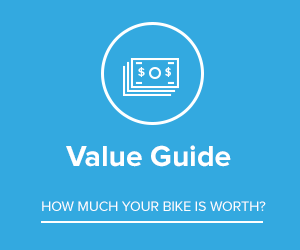Do I Really Need Clipless Pedals?

Attaching your foot to the pedal like a ski boot does a binding, clipless pedals provide safe, secure and efficient contact for any cyclist. However, are clipless pedals really that important of a feature? Can cyclists be just as efficient on the bike without being locked into the pedals?
The answer depends on what kind of riding you’ll be doing. For road cycling, yes, clipless pedals indisputably offer a significant advantage in pedaling efficiency, which is why every professional and almost every amateur racer uses clipless pedals. Even if you don’t race, clipless pedals on the road help improve the smoothness and efficiency of the pedal stroke, especially through the “dead spot” – between 9 o’clock and 12 o’clock in the pedal stroke – allowing the rider to pull up and forward for more consistent power delivery.

In mountain biking, there’s been a recent resurgence in using traditional flat pedals without clips, as their proponents claim the rider has more freedom to move on the bike and better ability to maneuver when negotiating technical terrain. Traditional flat pedals also require the user to learn tricks like bunny hopping the proper way, by lifting the front end of the bike first and using that dynamic energy to lift the rear end of the bike. For riders who learn to bunny hop with flat pedals, bunny hopping with clipless pedals is a breeze. However, the same is not true in reverse. Those who can easily bunny hop with clipless pedals thanks to being locked onto the bike may find it extremely difficult or impossible to bunny hop without clipless pedals. So there are some merits to riding with flat pedals on a mountain bike.
But when it comes to overall pedaling efficiency, clipless pedals on a mountain bike are still far superior to flat pedals. The fixed connection between foot and pedal combined with a stiffer shoe midsole provides a direct and more powerful link between the foot and the pedal. And provided the rider is comfortable with clipless pedals, being connected to the bike is far safer, especially when mountain biking on rocky, bumpy terrain that can throw the rider off balance, which can more easily cause a foot to slip with flat pedals than with clipless pedals.

Photo Credit: Forrest Arakawa
Of course the biggest fear of those new to clipless pedals is falling over before being able to clip out. And l’ll be up front about this – it’s going to happen at least once. Part of the initiation into the clipless pedal club is having an embarrassing fall at a near standstill in a public area. It’s happened to me, and it’s happened to many of my friends, including my favorite story of when a friend was clipped in, leaning against a car at a stoplight. When the light turned green, the car moved, but he didn’t, falling right into the road. However, this embarrassment can be easily mitigated if you learn the right way. Besides, if you’ve ever taken a flat pedal with those sharp grip spikes to the shin, you’ll agree that falling off your bike at low speed is far more agreeable.
Starting Out
The most important thing to do when first starting out with clipless pedals is setting the spring tension as loose as possible. Some pedals do not have spring adjustability, so with those types of pedals, you’ll have to make do with the fixed spring tension. The next thing to do is find a grassy field – preferably with nobody around – and practice the technique of clipping in and out until you are comfortable and it becomes second nature. Depending on how quickly you pick it up, this could only take 20 minutes or a couple of hours. The goal is to literally be almost completely stopped, and without panicking, be able to effortlessly clip out without falling.

Once you are comfortable in that big green grassy field with nobody around, put yourself in a scenario, whether it’s stopping at a stop sign or having to clip out on the trail before an obstacle you’re not able to clear. Another effective technique is to try clipping in and out while pedaling down the road or clipping out the inside pedal when entering a tight switchback. The more you do it, the easier it gets. And the easier it gets, the more you can crank up the spring tension to ensure your cleats don’t accidentally release if your foot positioning shifts. Before you know it, riding with clipless pedals will be an afterthought.

What Pedals Should I Get?
There are a plethora of brands out there including the inventor of the modern clipless pedal, Look, but in my experience, the go-to brand for durable, affordable and high quality pedals is Shimano SPD, both for road and for mountain bikes. For those road cyclists who have knee issues and require more “float” – side to side movement without the cleat releasing – Speedplay is the top choice. And thanks to their two-sided entry feature, clipping in and out of Speedplay road pedals is quicker and easier than the one-sided Shimano and Look designs.
For mountain bikers who live in extremely muddy regions and are worried about the pedals packing up with mud, Time ATACs have proven to have among the best performance in mud of any clipless pedal. And for those seeking the best of both worlds, the Crank Brothers Mallet provides a flat pedal platform with an integrated clipless mechanism.
Hopefully this will get you started on the path to going clipless, because once you go clipless, you’ll most likely never go back!
BicycleBlueBook.com – What’s Your Bike Worth?
Used Bicycles for Sale
